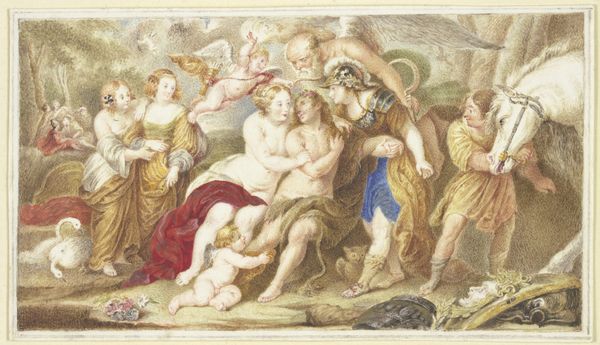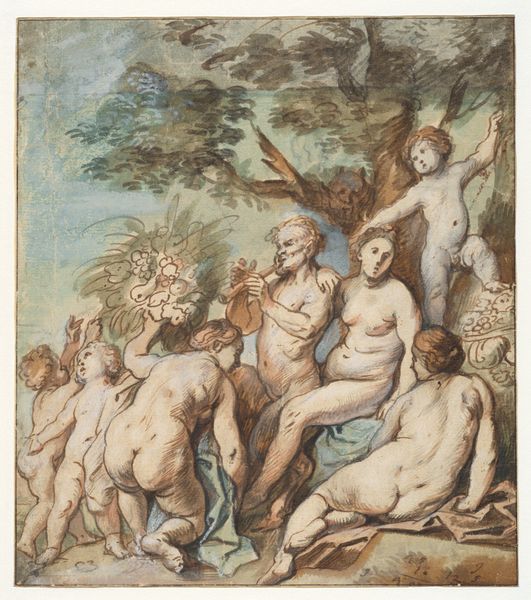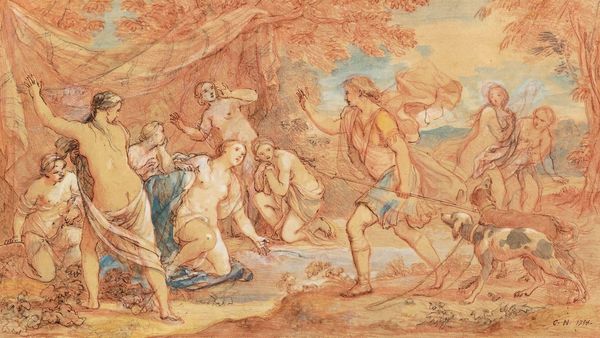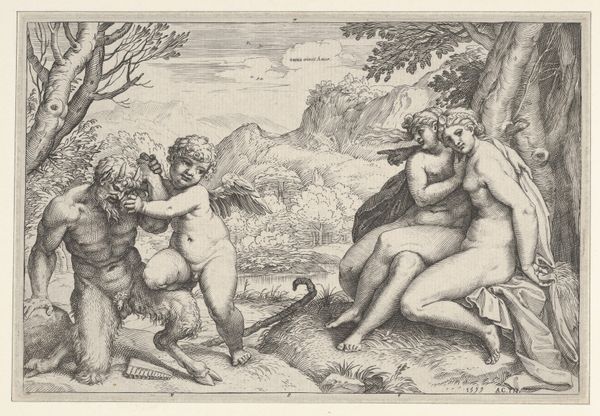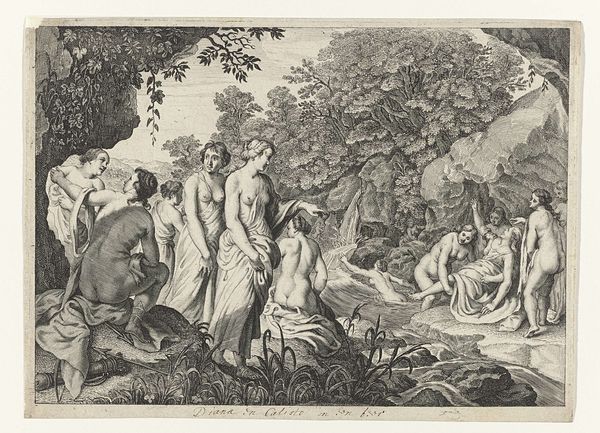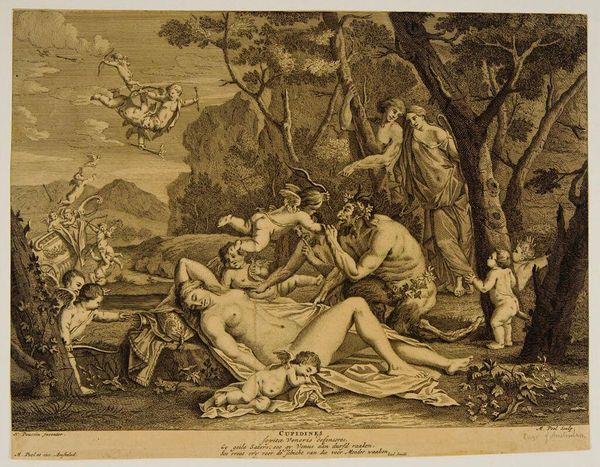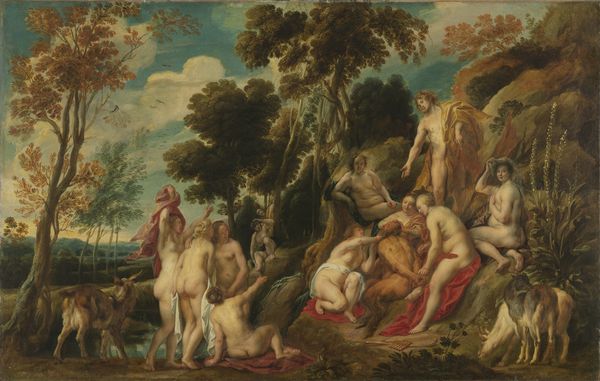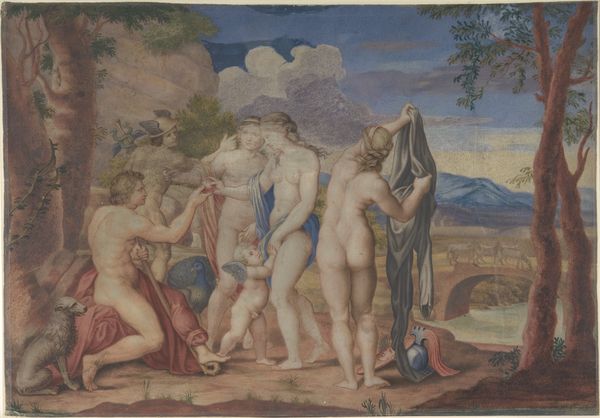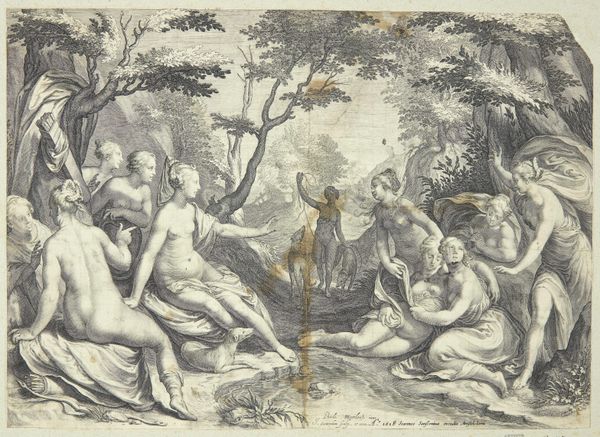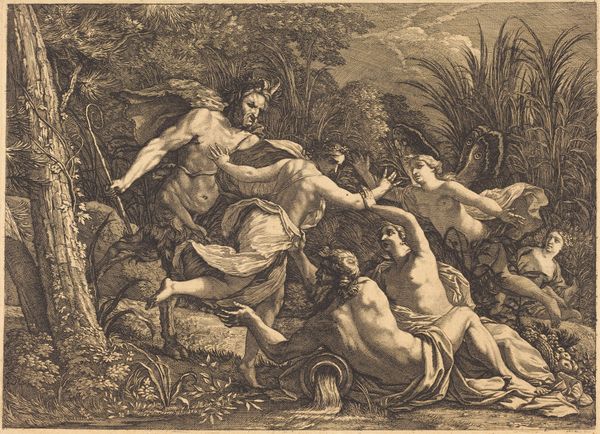
painting, watercolor
#
allegory
#
baroque
#
painting
#
watercolor
#
coloured pencil
#
watercolour illustration
#
history-painting
#
nude
Dimensions: height 175 mm, width 205 mm
Copyright: Rijks Museum: Open Domain
Willem van Mieris created this painting, "Actaeon Surprising Diana and Her Nymphs," sometime between the late 17th and early 18th centuries in the Netherlands. It stages a moment from classical mythology, and we can consider the painting’s production in relation to the art academy. Dutch artists of this time often looked to classical subjects for historical and mythological themes. The art academy promoted the idea of art as intellectual, rather than manual labor. Representing classical scenes allowed artists to display their knowledge of history, literature, and artistic conventions. Van Mieris, who was the director of Leiden’s drawing academy, also displays his talent in rendering the nude human form here. Consider this painting in relation to the artist’s role as an educator and the importance of the academy in shaping artistic taste. How do you think that institutions like the art academy affect art production? What other social forces do you see at play here? These are questions that art historians investigate. We consult archival sources, study artistic techniques, and interpret visual codes to better understand art's multifaceted meanings in its own time.
Comments
No comments
Be the first to comment and join the conversation on the ultimate creative platform.

